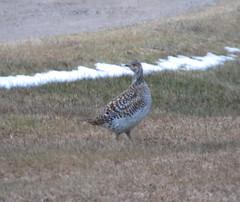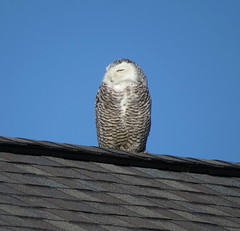Black-bellied Plover- Pluvialis squatarola
Family: Charadriidae
Order: Charadriiformes
Description: 10-13″ (25-33 cm) ADULT MALE In summer has striking black underparts, separated from spangled gray upperparts by broad white band. In winter, looks gray overall. Close view reveals spangled black and white upperparts and whitish underparts. Legs and bill are dark. ADULT FEMALE Similar to male, but black on underparts is variably mottled. In winter, similar to male. JUVENILE Resembles winter adult, but has pale buffy wash, hence potential for confusion with golden-plovers.
Voice: Utters a diagnostic pee-oo-ee call, like a human wolf-whistle.
Habitat: Breeds on high Arctic tundra. In winter, almost exclusively coastal, on salt marshes and estuaries. On migration, occasionally stages on lake margins in interior.
Nesting: 1-5 pinkish, greenish or brownish eggs with distinct dark spots. Nest is a scrape in ground, lined with lichens, pebbles, twigs, or leaves.
Range:
FYI’S:
- Wary and quick to give alarm calls, the Black-bellied Plover functions worldwide as a sentinel for mixed groups of shorebirds. These qualities allowed it to resist market hunters, and it remained common when populations of other species of similar size were devastated.
- The Black-bellied Plover may be more sensitive to disturbance than many other birds because it is especially wary, flushing from the nest or feeding and roosting sites when potential predators are still far away. Nevertheless, no evidence exists for desertion of the nest or roost sites because of disturbance.
- The Black-bellied Plover is the only American plover that has a hind toe on its foot. The hind toe, however, is so small that it is difficult to see in the field.






